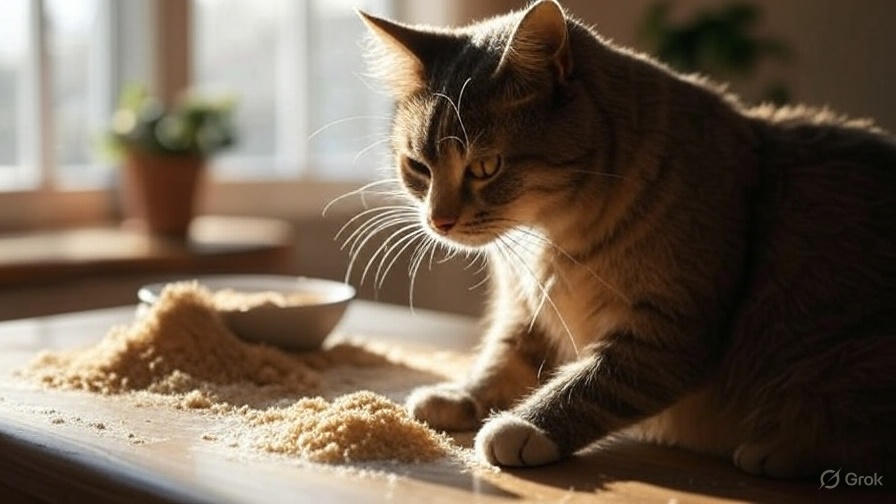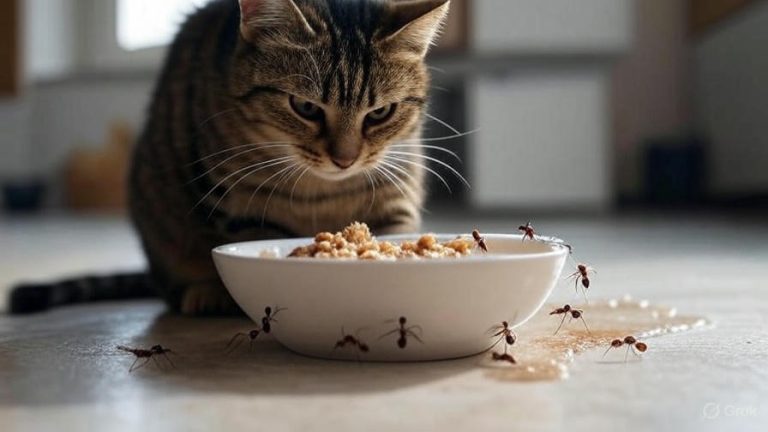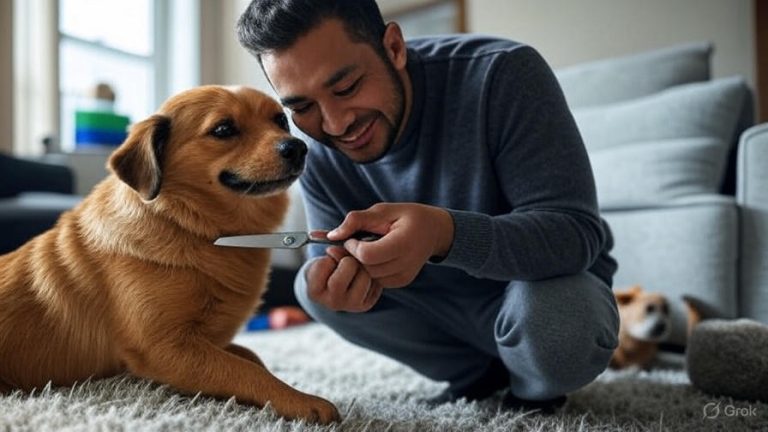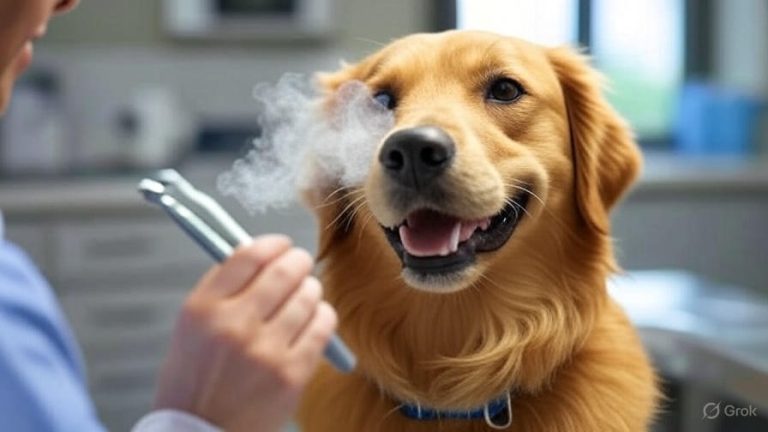How to Get Rid of Fleas on Cats Naturally?
Fleas can turn your beloved cat’s life into a nightmare of constant scratching and discomfort. These tiny parasites multiply rapidly and create infestations that seem impossible to control. However, you don’t need harsh chemicals to win the battle against fleas. Natural flea control methods offer safe, effective solutions that protect your cat’s health while eliminating these persistent pests.
Why Natural Flea Control Works Better
Traditional flea treatments often contain toxic chemicals that can harm your cat’s sensitive system. Pyrethrin-based products, for example, can cause skin irritation, breathing problems, and even neurological issues in some cats. Natural alternatives work just as effectively without these dangerous side effects.
Your cat’s skin absorbs whatever you apply to it. Chemical flea treatments enter your pet’s bloodstream and can accumulate over time, potentially causing long-term health issues. Natural remedies, on the other hand, target fleas without compromising your cat’s overall wellness.
Fleas have also developed resistance to many commercial pesticides. This resistance makes chemical treatments less effective over time. Natural methods attack fleas through multiple pathways, making it harder for these parasites to adapt and survive.
Essential Oils That Eliminate Fleas Safely
Certain essential oils create powerful natural flea repellents that cats can tolerate when used properly. Lavender oil tops the list of cat-safe options. Mix two drops of lavender oil with one tablespoon of carrier oil like coconut or olive oil. Apply this mixture to your cat’s collar or bandana, never directly on their fur.
Cedarwood oil disrupts flea life cycles and prevents eggs from hatching. Create a spray by mixing five drops of cedarwood oil with two cups of water in a spray bottle. Shake well before each use and spray your cat’s bedding, not your cat directly.
Eucalyptus oil works as both a flea killer and repellent. However, use this oil with extreme caution around cats. Only apply eucalyptus oil to areas where your cat cannot lick, such as the base of their tail or behind their ears. Dilute one drop with two tablespoons of carrier oil.
Remember that cats process essential oils differently than humans or dogs. Their livers lack certain enzymes needed to break down these compounds. Always dilute essential oils heavily and never apply them directly to your cat’s skin without consulting your veterinarian first.
Diatomaceous Earth: Nature’s Flea Destroyer
Food-grade diatomaceous earth (DE) offers one of the most effective natural flea treatments available. This powder consists of fossilized algae that damages flea exoskeletons, causing them to dehydrate and die. The microscopic sharp edges cut through flea bodies while remaining completely safe for mammals.
Purchase only food-grade diatomaceous earth, never pool-grade versions that contain harmful chemicals. Sprinkle a thin layer of DE on your cat’s bedding, carpets, and upholstery where fleas might hide. Work the powder into carpet fibers using a broom or brush.
Leave the diatomaceous earth in place for several hours or overnight, then vacuum thoroughly. The powder needs time to contact fleas and work its magic. Repeat this process every few days until you eliminate all fleas from your home.
You can also apply diatomaceous earth directly to your cat’s fur, but use caution around their face and avoid creating dust clouds they might inhale. Rub small amounts into their coat, focusing on areas where fleas congregate like the base of the tail and behind the ears.
Apple Cider Vinegar: The Acidic Solution
Apple cider vinegar changes your cat’s skin pH, creating an environment that fleas find inhospitable. This natural remedy also provides vitamins and minerals that improve your cat’s overall coat health. Start by adding one teaspoon of raw, unfiltered apple cider vinegar to your cat’s water bowl daily.
Create a topical spray by mixing equal parts apple cider vinegar and water. Test this solution on a small patch of your cat’s skin first to ensure they don’t have sensitivities. If your cat tolerates it well, spray the mixture lightly on their coat, avoiding the face and eyes.
Some cats refuse to drink water with vinegar added. In these cases, apply the diluted vinegar solution directly to their fur using a damp cloth. Focus on areas where fleas commonly hide, such as the neck, base of the tail, and behind the legs.
Raw apple cider vinegar works better than processed versions because it contains beneficial enzymes and probiotics. These compounds support your cat’s immune system while creating an inhospitable environment for fleas and other parasites.
Flea-Repelling Plants and Herbs
Several plants naturally repel fleas and can help protect your home from infestations. Grow these plants around your home’s perimeter or place potted versions near windows and doors where fleas might enter.
Pennyroyal creates one of the strongest natural flea deterrents. However, this herb can be toxic to cats in large quantities. Use pennyroyal sparingly and keep live plants out of your cat’s reach. Dried pennyroyal placed in small sachets under furniture provides flea protection without direct cat contact.
Rosemary offers a safer alternative that cats typically tolerate well. Fresh rosemary sprigs placed around your home create natural flea barriers. You can also make rosemary tea by steeping fresh or dried leaves in hot water, then spray the cooled liquid on carpets and upholstery.
Mint plants repel fleas while providing a fresh scent to your home. Plant spearmint or peppermint around outdoor areas where your cat spends time. Indoor mint plants should be placed where curious cats cannot nibble on them, as large amounts can cause digestive upset.
Catnip doesn’t just attract cats – it also repels fleas effectively. The same compound that drives cats wild, nepetalactone, makes fleas flee quickly. Grow catnip in your garden or sprinkle dried catnip on areas where your cat rests.
Salt and Baking Soda: Household Flea Fighters
Common kitchen ingredients can become powerful flea elimination tools. Salt dehydrates flea eggs and larvae, preventing them from developing into biting adults. Fine table salt works better than coarse varieties because it penetrates deeper into carpet fibers.
Sprinkle salt generously on carpets, rugs, and upholstered furniture. Work the salt into fibers using a brush, then leave it for several hours before vacuuming. The salt needs time to contact flea eggs and larvae hiding deep in fabric.
Baking soda works similarly to salt but also helps eliminate odors that might attract fleas. Mix equal parts salt and baking soda for a powerful combination treatment. This mixture targets all life stages of fleas while freshening your home naturally.
Repeat salt and baking soda treatments weekly during active flea seasons. These ingredients are completely safe around cats and provide ongoing protection against re-infestation.

Dawn Dish Soap: The Gentle Flea Bath
Dawn dish soap kills fleas on contact while remaining gentle enough for regular use on cats. The soap’s surfactants break down flea exoskeletons and drown adult fleas quickly. This method provides immediate relief for heavily infested cats.
Fill a bathtub or large sink with lukewarm water and add several drops of original Dawn dish soap. Create a rich lather before placing your cat in the water. Work the soapy water through their fur, paying special attention to flea hiding spots.
Allow the soap to remain on your cat’s fur for five minutes before rinsing thoroughly. This contact time ensures all fleas are eliminated. You may see dead fleas floating in the water or falling off your cat during the bath.
Rinse your cat completely to remove all soap residue, which can cause skin irritation if left behind. Follow up with a gentle, moisturizing rinse made from diluted apple cider vinegar to restore your cat’s natural skin pH.
Creating a Comprehensive Natural Flea Treatment Plan
Successful flea elimination requires attacking these pests from multiple angles simultaneously. Adult fleas on your cat represent only about 5% of the total flea population in your home. The remaining 95% consists of eggs, larvae, and pupae hiding in carpets, furniture, and bedding.
Start your treatment plan by addressing your cat directly with gentle methods like Dawn soap baths or diluted essential oil applications. These treatments eliminate adult fleas currently feeding on your pet and provide immediate relief from itching and discomfort.
Next, treat your home environment using diatomaceous earth, salt, or baking soda on all fabric surfaces. Vacuum daily during treatment periods to remove dead fleas and disturb developing larvae. Empty vacuum bags immediately or freeze them overnight to kill any surviving fleas.
Wash all pet bedding, your own linens, and any fabric items your cat contacts regularly in hot water. High temperatures kill all flea life stages instantly. Dry these items on high heat settings when possible for additional flea-killing power.
Maintain humidity levels below 50% in your home, as fleas struggle to survive in dry conditions. Use dehumidifiers or increase ventilation to create an environment that naturally discourages flea development.
Environmental Controls That Support Natural Treatment
Your home’s environment plays a crucial role in natural flea control success. Fleas thrive in warm, humid conditions and struggle in clean, dry spaces. Regular vacuuming removes up to 96% of flea eggs and 100% of flea larvae from carpeted areas.
Focus your vacuuming efforts on areas where your cat spends the most time. Pay special attention to carpet edges, under furniture, and in corners where flea eggs accumulate. The vacuum’s vibrations also stimulate flea pupae to emerge prematurely, making them easier to eliminate.
Steam cleaning carpets and upholstery monthly during flea season provides additional control. The high temperatures kill all flea life stages while deep cleaning removes the organic debris that flea larvae feed on.
Keep your lawn trimmed short, as tall grass provides ideal flea breeding conditions. Remove yard debris like leaf piles where fleas might develop. Consider beneficial nematodes, microscopic worms that eat flea larvae naturally, for severe outdoor infestations.
Nutritional Support for Natural Flea Resistance
A healthy cat with a strong immune system naturally resists flea infestations better than stressed or malnourished animals. Proper nutrition supports your cat’s skin health and creates natural barriers against parasites.
High-quality protein provides the building blocks for healthy skin and coat. Cats with silky, thick fur make it harder for fleas to reach their skin and establish feeding sites. Choose foods with named meat sources as the first ingredient.
Omega-3 fatty acids reduce inflammation and support skin health. Fish oil supplements or foods containing salmon, sardines, or mackerel provide these essential nutrients. Healthy skin heals faster from flea bites and becomes less attractive to new parasites.
Probiotics support your cat’s immune system and help them fight off parasites naturally. These beneficial bacteria also improve nutrient absorption, ensuring your cat gets maximum benefit from their food.
B-complex vitamins, particularly thiamine (B1), create natural flea repellent effects when consumed regularly. Nutritional yeast provides B vitamins and can be sprinkled on food in small amounts.
Monitoring and Maintaining Your Natural Flea Control Program
Track your progress by checking your cat daily for signs of fleas. Adult fleas appear as small, dark specks that move quickly through fur. Flea dirt looks like black pepper sprinkled on your cat’s skin and turns reddish-brown when moistened.
Use a fine-toothed flea comb to catch adult fleas and monitor population levels. Comb your cat over a white towel so you can easily spot any fleas that fall off. Dip the comb in soapy water between strokes to drown captured fleas.
Document which natural treatments work best for your specific situation. Every home and cat is different, so you may need to adjust your approach based on results. Keep notes about application methods, frequencies, and effectiveness.
Continue natural flea prevention year-round in warm climates or during heating season in colder areas. Fleas can survive indoors during winter and emerge quickly when conditions improve. Consistent prevention efforts cost less than treating full-blown infestations.
When to Seek Professional Help
Natural flea control methods work effectively for most situations, but severe infestations may require additional intervention. Consult your veterinarian if your cat shows signs of flea allergy dermatitis, including excessive scratching, red bumps, or hair loss.
Young kittens, elderly cats, or animals with compromised immune systems may need gentler approaches or professional guidance. These vulnerable animals can become anemic from heavy flea feeding and require immediate attention.
If natural methods don’t reduce flea populations within two weeks of consistent application, consider consulting a holistic veterinarian. They can recommend stronger natural alternatives or determine if underlying health issues make your cat more susceptible to parasites.
Professional pest control services that use integrated pest management (IPM) approaches can supplement your natural efforts. These services focus on environmental modifications and targeted treatments rather than broad chemical applications.
Natural flea control requires patience and consistency, but the results protect your cat’s health while eliminating these troublesome parasites. By combining multiple natural approaches and maintaining a clean environment, you can keep your feline friend comfortable and flea-free year-round. The investment in natural methods pays dividends in your cat’s long-term health and wellbeing.







